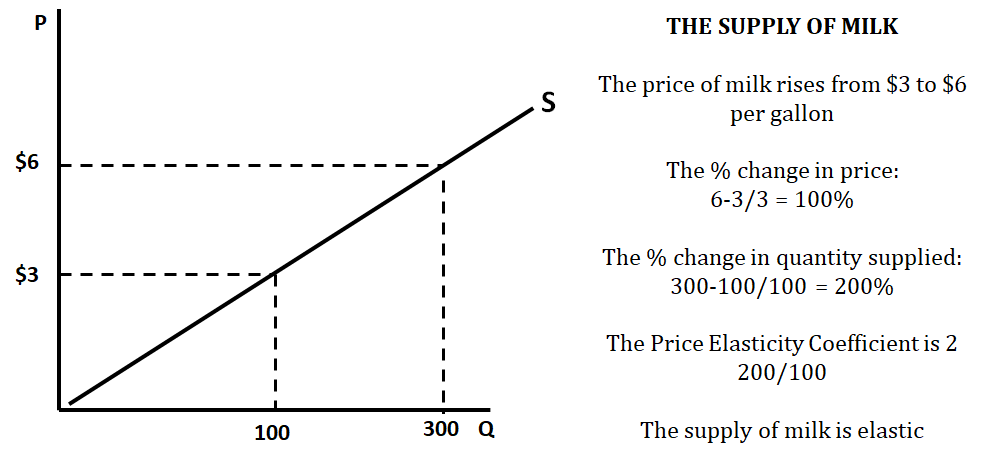J
Jeanne Stansak
AP Microeconomics 🤑
95 resourcesSee Units
Unit 2: Supply and Demand
2.4: Price Elasticity of Supply
Definition
The price elasticity of supply is the measurement of how responsive firms (businesses) are to a change in the price of a good or service in the market. It shows us just how much they will alter their production when the price of a product changes.
💡You must drop all negatives when calculating the elasticity of supply.
Types of Elasticity
Just like with demand, there are 3 types of elasticity for supply: elastic, inelastic, and unit elastic:
- Elastic supply means that firms are very responsive to price changes (i.e. if the price of a product increases there will be a large increase in the quantity supplied).
- Inelastic supply means that firms are not very responsive to price changes (i.e. if the price of a product increases, there will be a small increase in the quantity supplied).
- Unit elastic means that firms are proportionally responsive to changes in market price (i.e. if there is a 30% increase in price then there will be a 30% increase in quantity supplied).
Time is the biggest factor in determining the price elasticity of supply. Producers need time to adjust production or retrieve the resources needed for production. Most goods have an inelastic supply in the short-run (where at least one resource is fixed) and have an elastic supply in the long-run. Sometimes, you will have a perfectly inelastic supply which means that the quantity of goods is set and cannot be changed (i.e. there are a set number of hotel rooms in a hotel 🏨).
Resources are typically fixed in the short run because producers are not able to acquire new resources or change the number of resources they have that quickly. Let's consider this scenario, a farmer has 10 acres on which he grows oranges and learns that he can get a higher price for oranges at the market. His first reaction is to produce more oranges however he is limited to the 10 acres of land. This is an example of being in the short run. As more time passes he may be able to acquire additional acreage of land, and be operating in the long run.🍊
Calculating the Price Elasticity of Supply
Formula:
Remember to drop the negatives when solving for elasticity of supply!


Rules:
The elasticity coefficient you just calculated can be applied to determine the type of supply for that good or service.
Browse Study Guides By Unit
💸Unit 1 – Basic Economic Concepts
📈Unit 2 – Supply & Demand
🏋🏼♀️Unit 3 – Production, Cost, & the Perfect Competition Model
⛹🏼♀️Unit 4 – Imperfect Competition
💰Unit 5 – Factor Markets
🏛Unit 6 – Market Failure & the Role of Government
📝Exam Skills: FRQ/MCQ

Fiveable
Resources
© 2023 Fiveable Inc. All rights reserved.